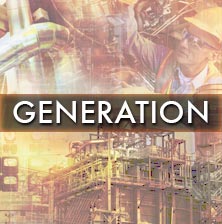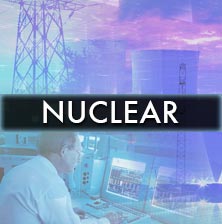The following is a small selection of items recently published by EPRI. To view complete lists of your company-funded research reports, updates, software, training announcements, and other program deliverables, log in at www.epri.com and go to Program Cockpits.

This study assesses the performance and costs of integrated gasification combined-cycle power plants with partial CO₂ capture designed to meet the U.S. Environmental Protection Agency’s initial CO₂ emissions limit of 1,100 pounds per megawatt-hour.

Kinetic energy tiles are floor tiles in the early technology development stage that capture the force of human footsteps and turn it into electrical energy. The report discusses the results of EPRI’s laboratory performance evaluations of tiles from two manufacturers.

This newsletter tracks developments in key superconductivity technologies, R&D programs, demonstrations, deployments, and other activities.

This report describes the state of knowledge of film-forming amines, a class of chemicals that can be added to boiler feedwater to inhibit boiler corrosion in conventional fossil and combined cycle power plants. Topics covered include filming mechanism, volatility, thermal stability, benefits, adverse impacts, and research needs.

Since 2011, nuclear power utilities have aggregated more than 4,300 inspection results for buried and underground pipes into an EPRI-managed industry database. Data analysis indicated that buried pipes are in extremely good condition and that internal corrosion is a more significant concern for some systems. This report discusses these and other observations and conclusions.

Because a nuclear power plant includes numerous safety and non-safety-related components constructed to various codes, its welding program must comprehensively support welding activities on all components. This report provides an introductory welding program training course suitable for new or experienced personnel. The course’s 12 study modules include an overview of nuclear welding programs and cover topics such as weld configurations and defects, welding metallurgy, filler metal, and inspection techniques.

With technological advances such as advanced metering, utilities are able to offer customers a wider range of electricity service plans. But they need to collect information on preferences to guide decisions on new options and customer engagement. This report describes a survey approach for collecting this information (known as discrete choice experiment) and an application of the survey to customers of three utilities, offering guidance on how utilities can use the approach to diversify their service portfolios.

A significant number of wind farms have warranties that will expire in the near future. This report provides guidance on managing wind farm warranties, including industry trends, initial project agreements, timing of pre-end of warranty activities, end-of-warranty inspections, and post-warranty operations and maintenance options.

This report presents findings from a four-year study of driver safety in electric utility fleets. Data were collected via a braking-triggered video system deployed on light-utility and travel trucks operated by 39 organizations. The research objective is to inform driver risk management practices and improve fleet safety.

The Occupational Health and Safety Database integrates personnel, injury, and claims data from 18 companies, enabling the power industry to monitor annual injury and illness trends and benchmark and evaluate intervention programs. Based 19 years of data (1995-2013), this report provides an in-depth statistical analysis of injury rates, types, and, severity, and compares data from various occupational groups.

First published in 1995 and updated in 2002, EPRI’s emission factors can be used to estimate annual emissions of trace substances from coal-, oil-, and petroleum coke-fueled plants for Toxics Release Inventory reporting, air permitting, facility design, and other purposes. They are developed by pooling results of emissions measurements at power plants. EPRI’s 2014 emission factors merge the 2002 data with measurements made in response to the U.S. Environmental Protection Agency’s 2010 information request for the Mercury and Air Toxics Standards rulemaking, as well as from other recent stack tests conducted by power companies. The larger pool of measurements enabled more robust, accurate emissions factors for most types of power plants.

As the grid grows more complex, the industry increasingly needs a unified grid operating system to integrate various utility applications. This report discusses the evolution of information technology over the last five years, the status of existing applications, alternative information architectures, and the need for a unified schema to build more integrated utility applications.